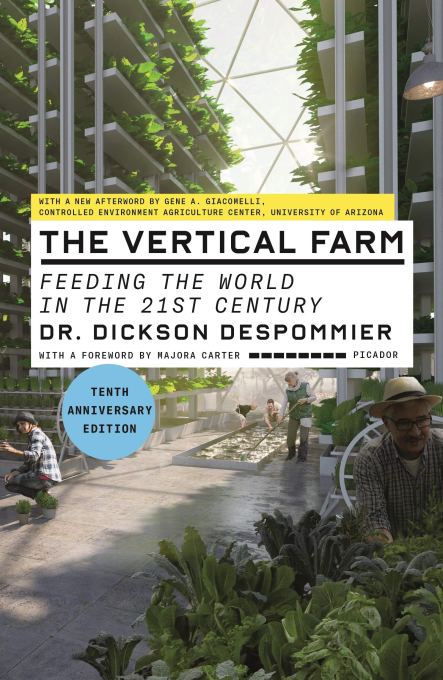Last week, TechCrunch ran my TC-1 about Bowery Farming. What began as a piece about a heartily financed New York startup ballooned into an exploration about an emerging field with a rich and fascinating history. I sought to answer some big questions about the efficacy, profitability and sustainability of vertical farming. I would be lying if I told you that I emerged from the other side with satisfactory answers — no doubt all of the above will be clear over time.
I did, however, get the opportunity to talk to several fascinating folks with myriad views on all of the above. One of the folks I kept coming back to was Dickson Despommier — widely regarded as the godfather of vertical farming. It was in his Columbia University courses that many of the fundamental concepts around vertical farming were developed over a number of years.
His 2010 book, “The Vertical Farm,” has also proven a foundational text for many. Last year, he marked the book’s 10th anniversary with a new edition that offers an afterword reflecting on much of what has transpired in the intervening decade. “In 2010, when this book was first published, there were no vertical farms,” Despommier writes in a new chapter. “As of this writing, there are so many vertical farms, I don’t know exactly how many exist.”
Dickson Despommier of Columbia University and author of “The Vertical Farm.” Image Credits: Dickson Despommier
The author certainly has much to celebrate. Vertical farms now number in the hundreds across the world. Startups and governments alike are exploring the technology amid concerns around climate change, overpopulation and overfarming. As I noted in my recent review, the book is not an instruction manual, so much as a piece of utopian text exploring what could be with sufficient funding, technologies and follow-through. This is the story Despommier wants to tell, and frankly, it’s hard to blame him. In a world bogged down by streams of relentlessly depressing news, it’s nice to have the occasional bit of utopian idealism, however realistic it may or may not ultimately be.
It seemed appropriate to bookend the review by talking to Despommier and revisiting some of the book’s ideas and idealism. While the book got much right in the abstract, “The Vertical Farm” missed some of the finer details on precisely how these farms would look and act.
“I had a good picture of me, sort of kneeling down on the road with my I had my camera and I took a picture of the Apple Store on 59th Street and Central Park West,” explains Despommier. “I thought this is the way the vertical farm is gonna look. It just has to look this way. And it’s just the opposite. It’s just what you want to do is to keep out sunlight, because it contains wavelengths of light that actually inhibit plant furrows. And who knew that until you started to use LED lights, and you could tune and then you could see the red and the blue, little bit of green. And you throw that together and you leave out all the other visible spectra. And you’ve now made it much more efficient and the plants grow twice as fast.”
The model that we’ve seen thus far is more akin to a factory than a greenhouse. Large, windowless buildings that once served as fulfillment centers now house farms, powered by LED technologies, rather than the sun — the world’s largest renewable power source. Energy consumption remains one of the biggest question marks around this technology. Proponents insist that it’s a net positive for the environment over more traditional agricultural methods. For my part, I feel pretty strongly that the jury is still out — though it seems plausible that emerging technologies could move the needle. For his part, Despommier points to technologies like photovoltaics, water harvesting and cross-laminated timber construction as keys to achieving those ends.

Cover of The Vertical Farm, 10th anniversary edition. Image Credits: Picador
“We want the city to become a mutualistic symbiont,” says Despommier. “That’s a fancy term for it helps the countryside survive by not taking advantage of it. Today, for instance, where I am, it’s raining. Every building out there should have a rain harvesting system built into the roof system. And they should have a storage system. And they should use that water for heating and cooling as well as for bathing and drinking and even part of the vertical farm.”
For his vision to truly be achieved, however, innovation will need to go on a capitalist-driven startup model. Governments will have to take a more aggressive role in realizing these technologies in an effort to minimize the inevitable impact of human-made climate change.
“The United States Department of Agriculture’s had five or six regional meetings already on [vertical farming],” he says. “I was a participant in two of those in Washington, DC, and very high-level people were at that meeting. You were allowed to speak your mind, you could say whatever you wanted, you could pooh-pooh the idea, or you could tout it way beyond its potential. And we had both of those sides of the story being spoken at the same time. You can now find on the website for the USDA a section devoted to indoor farming.”













